
Tallgrass Prairie is the nation's second newest national preserve (2005). It is located in the Flint Hills region of Kansas, north of Strong City.

Tallgrass Prairie National Preserve includes 10,861 acres.
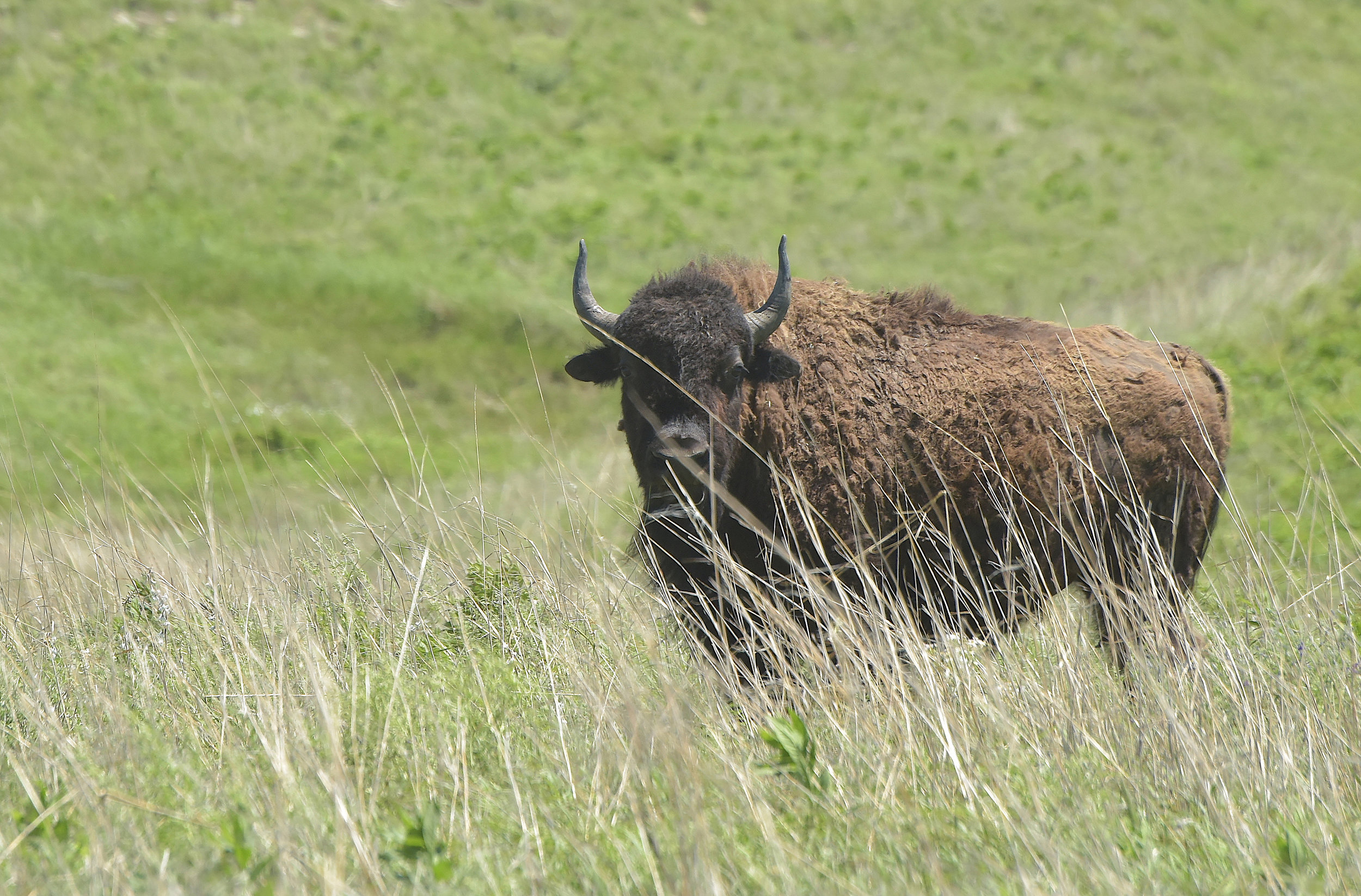
Tallgrass prairie once covered 170 million acres of North America; today less than 4% remains, mostly in the Kansas Flint Hills.

Bison, which once totaled about 30 million in number, were kings of the prairie, roaming the range in herds of dozens to millions.
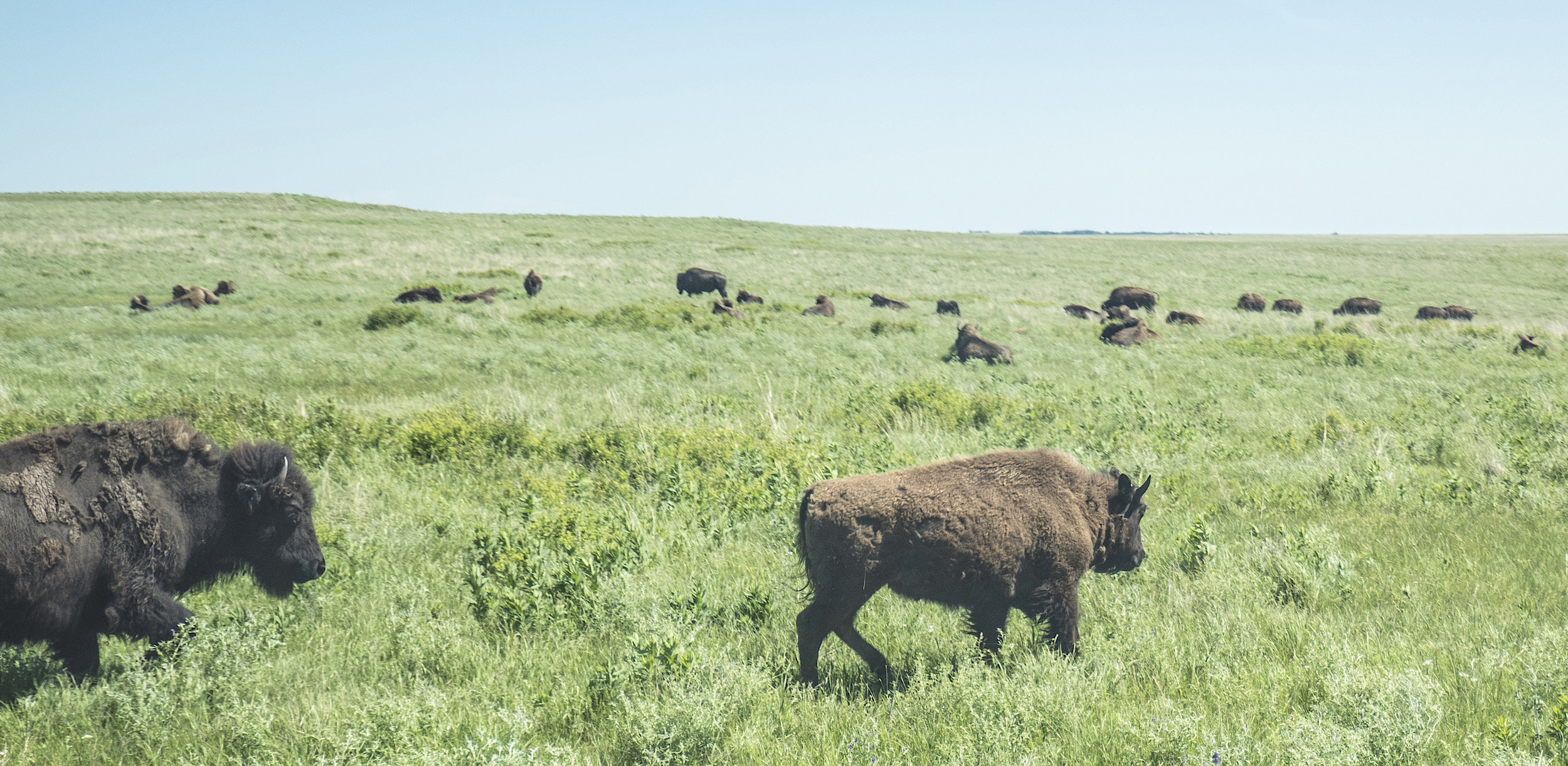
The great herds of bison once roamed North America between the Appalachian Mountains and the Rocky Mountains.
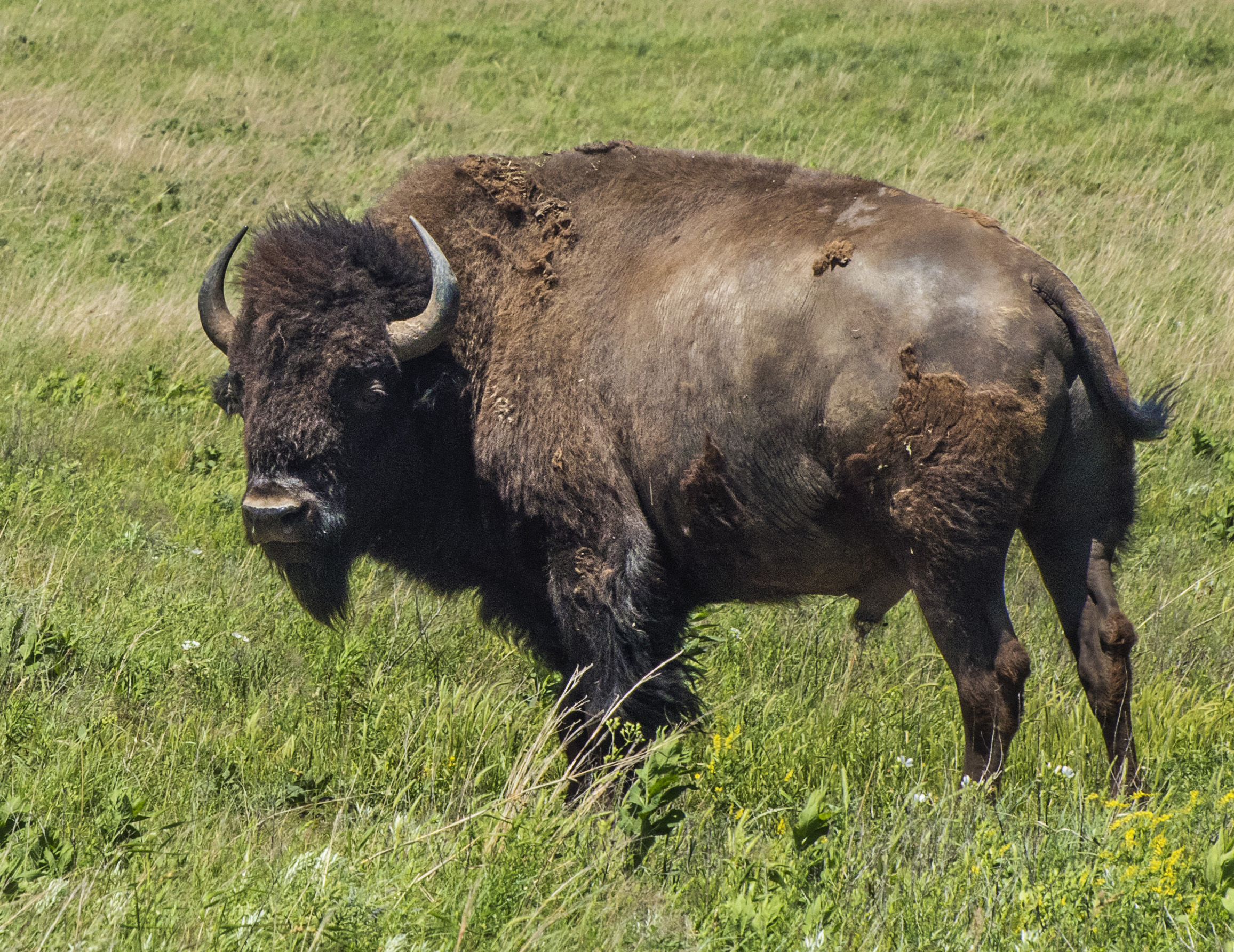
Plains Bison were introduced to the Preserve in October 2009; the first time bison were on the property for over 100 years.
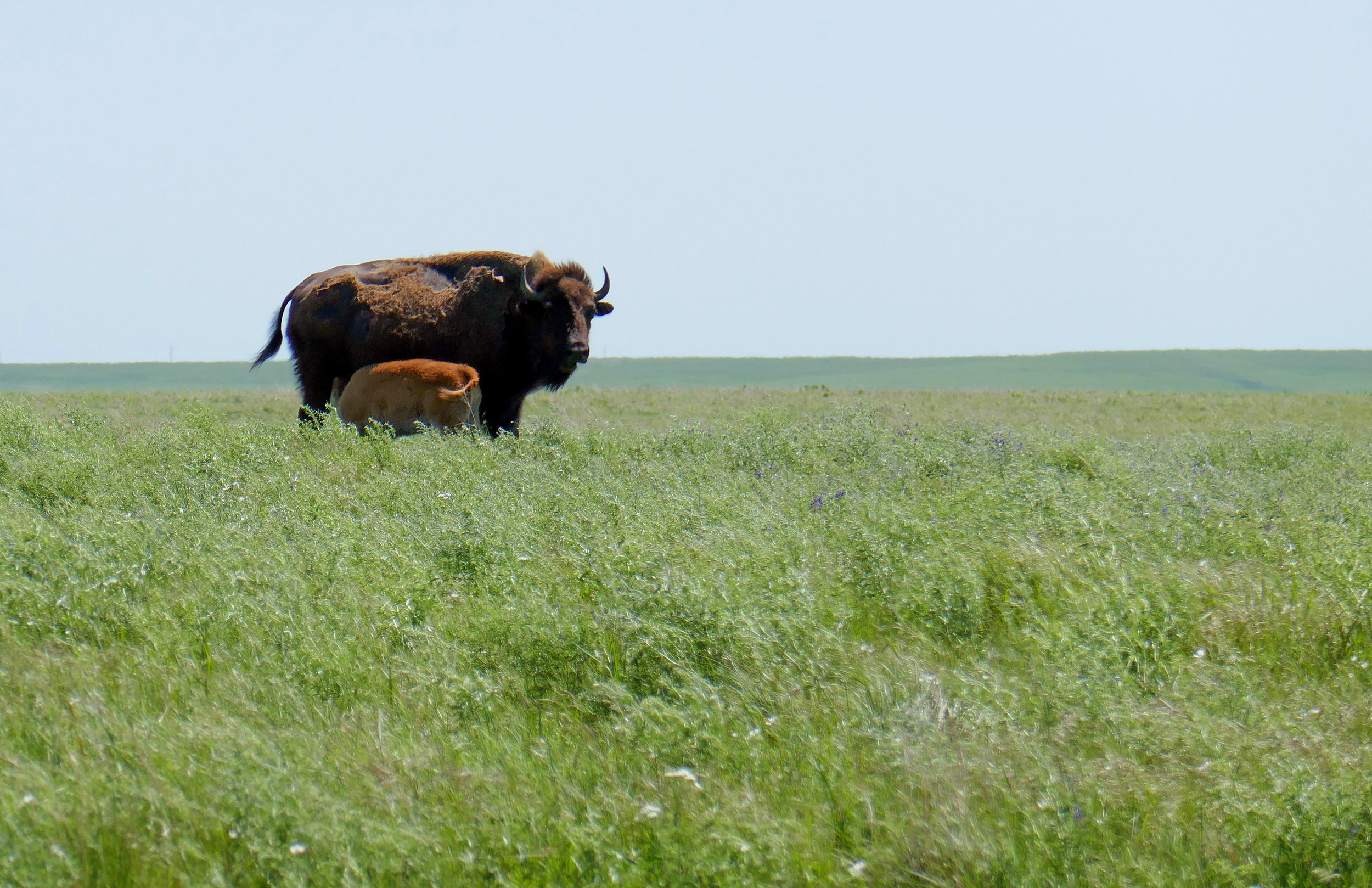
Calf feeding. Healthy female bison will typically have one calf per year, born usually in April-May.

The original herd of 300 bison at Tallgrass Prairie Preserve has grown to the optimum over-wintered size of about 2,100.

Bison can weigh as much as 2,000 pounds.
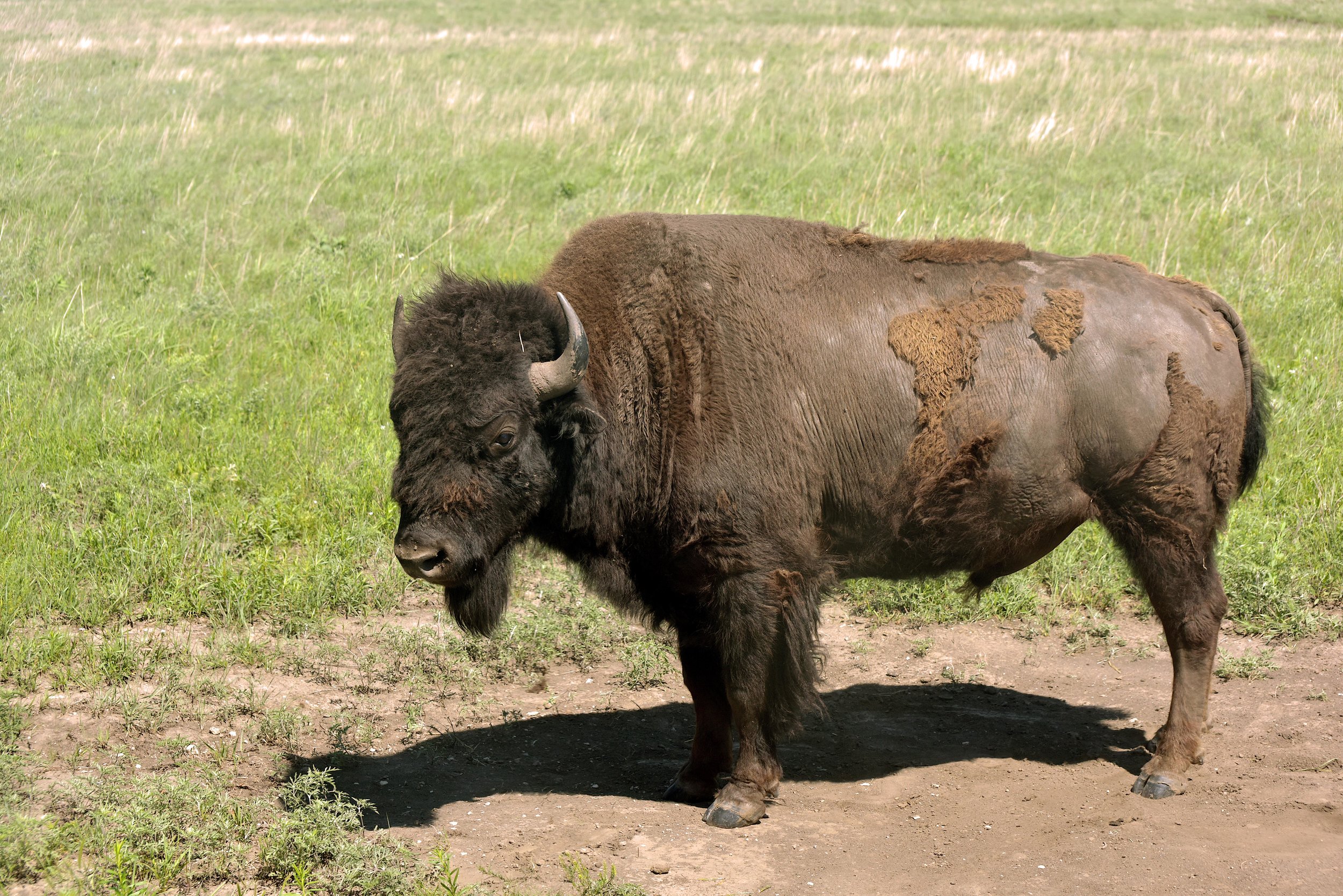
Bison can stand over six feet tall and live as long as 40 years.
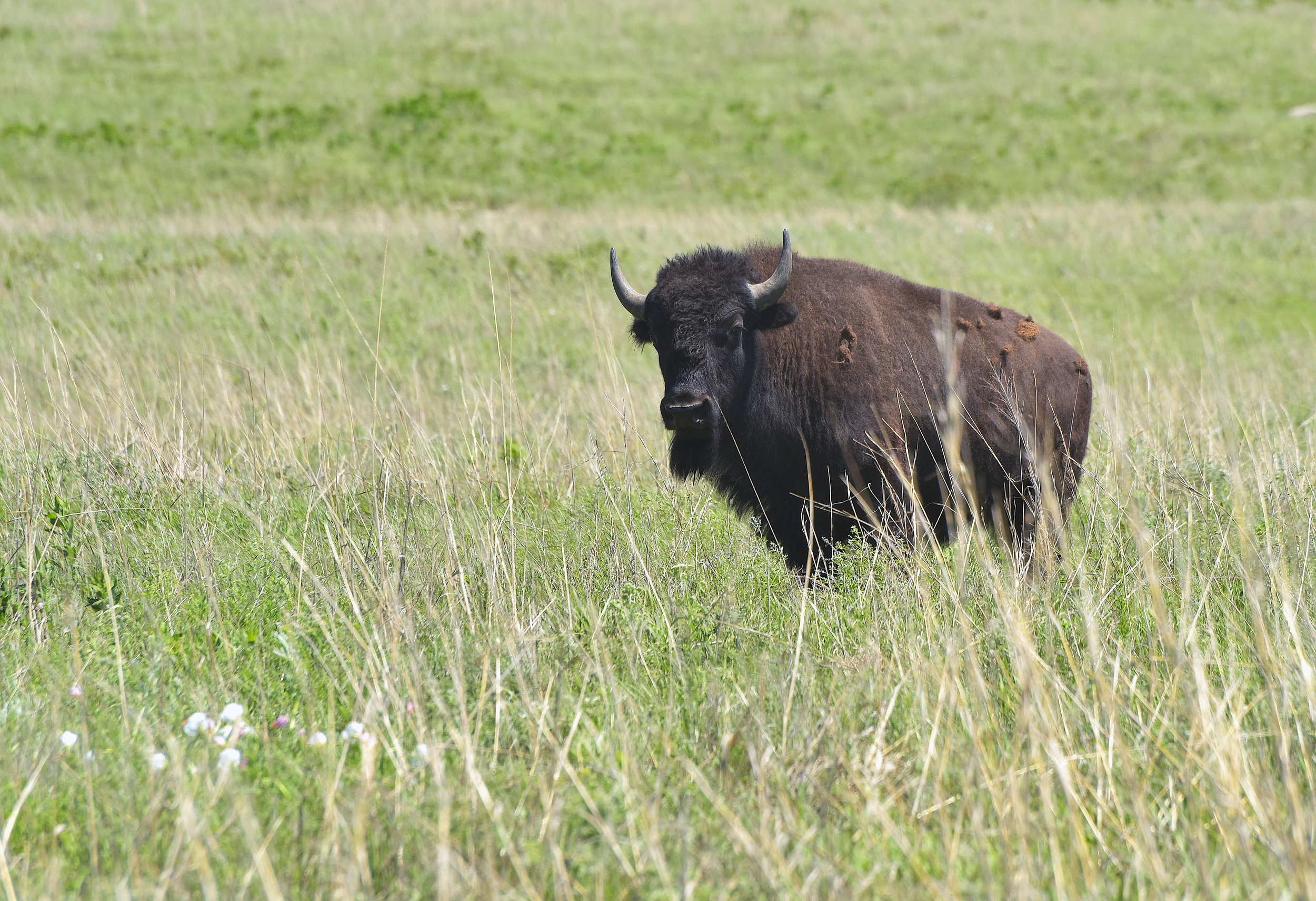
Despite their size, bison are able to run at speeds of up to 35 mph.
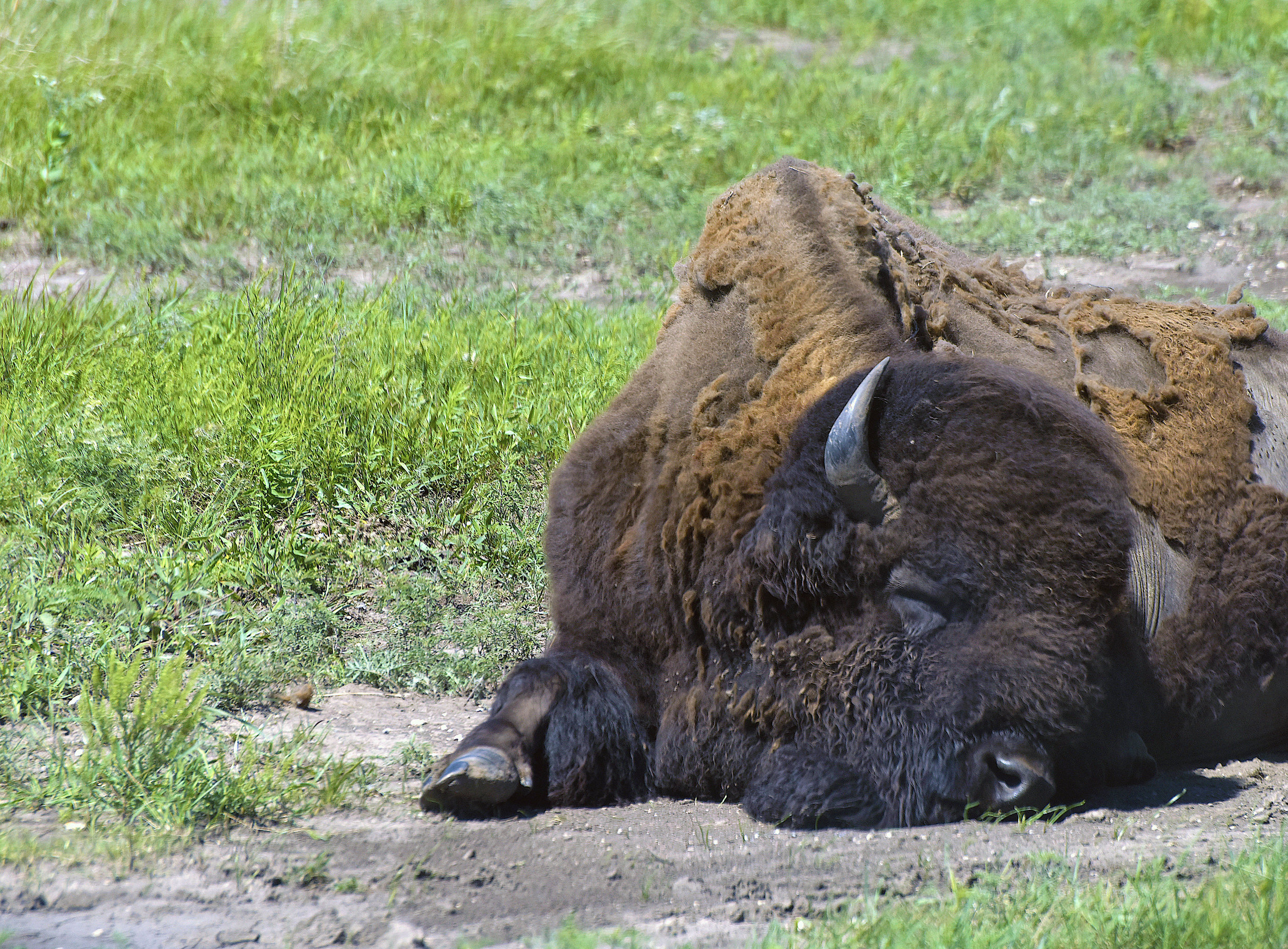
On the other hand, this one did not move at all when the Preserve bus passed by.
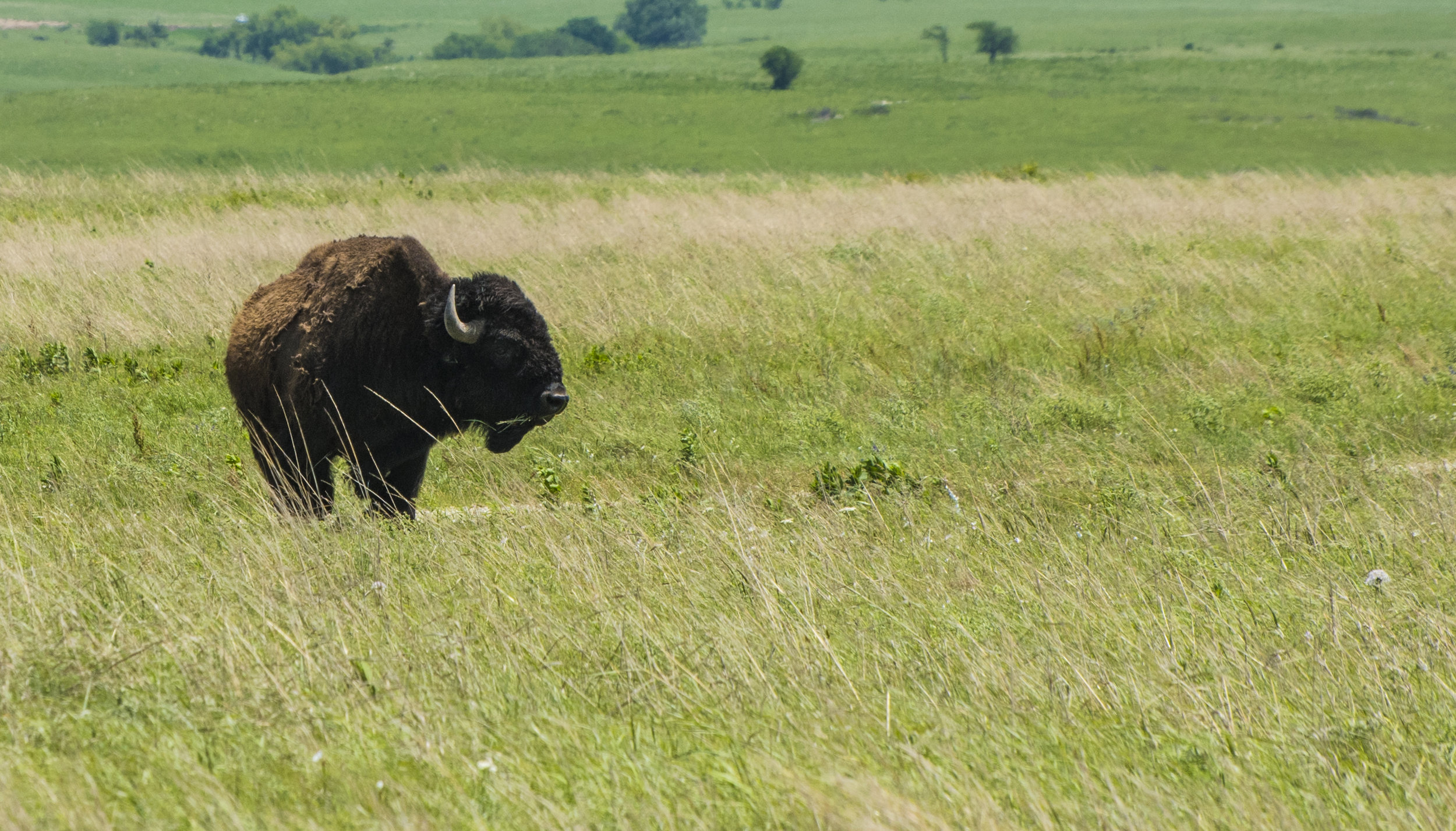
Bison are grazers and prefer grasses to other prairie plants, such as wildflowers.
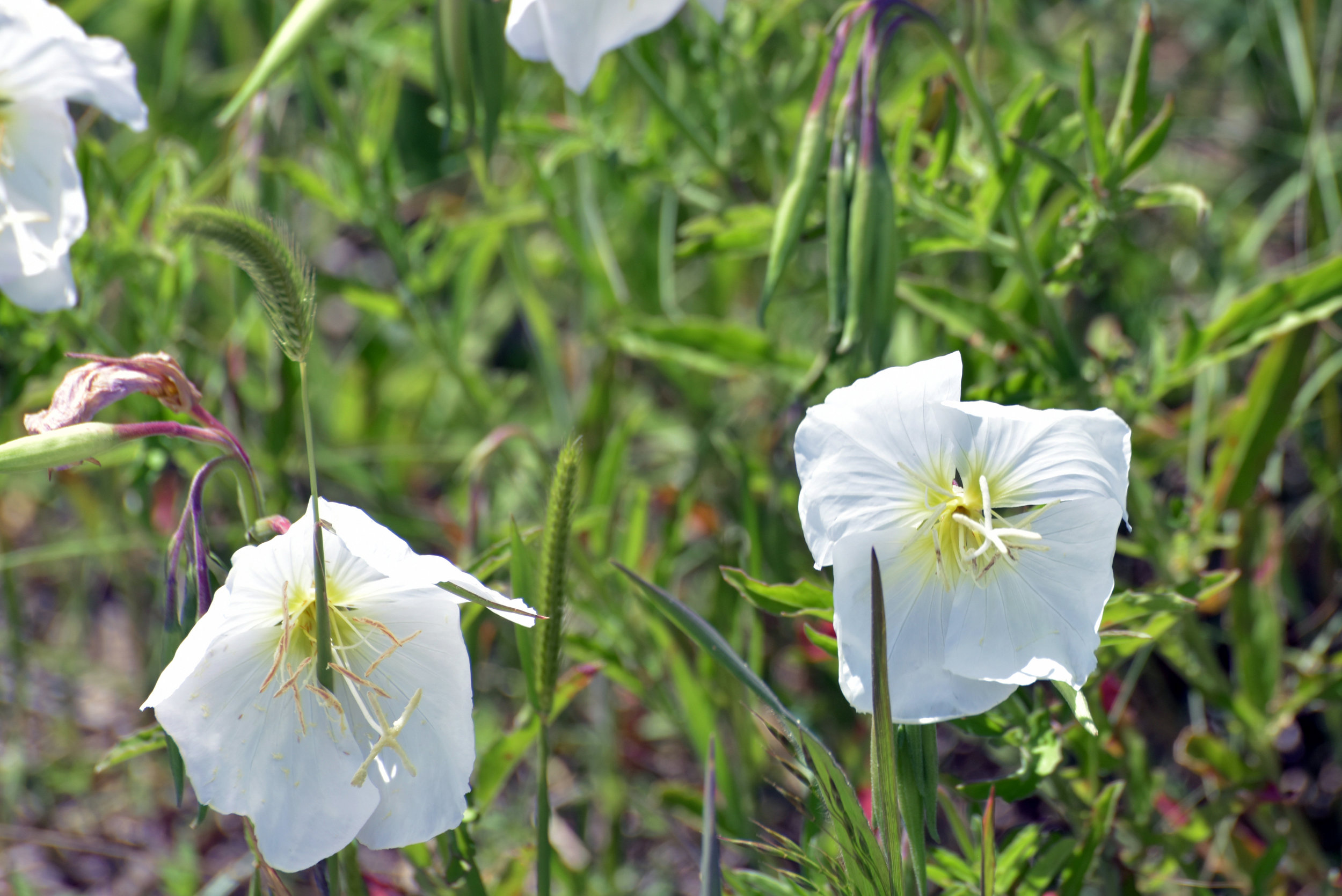
Pale evening primrose - Native Americans ate the fruits for food, boiled the seeds in soups, used the dried flowers as ceremonial medicine, and smoked the plant as a tobacco substitute.

We were warned that bison can be aggressive; and told that we had to give them space of 100 yards and walk around if they blocked our path.
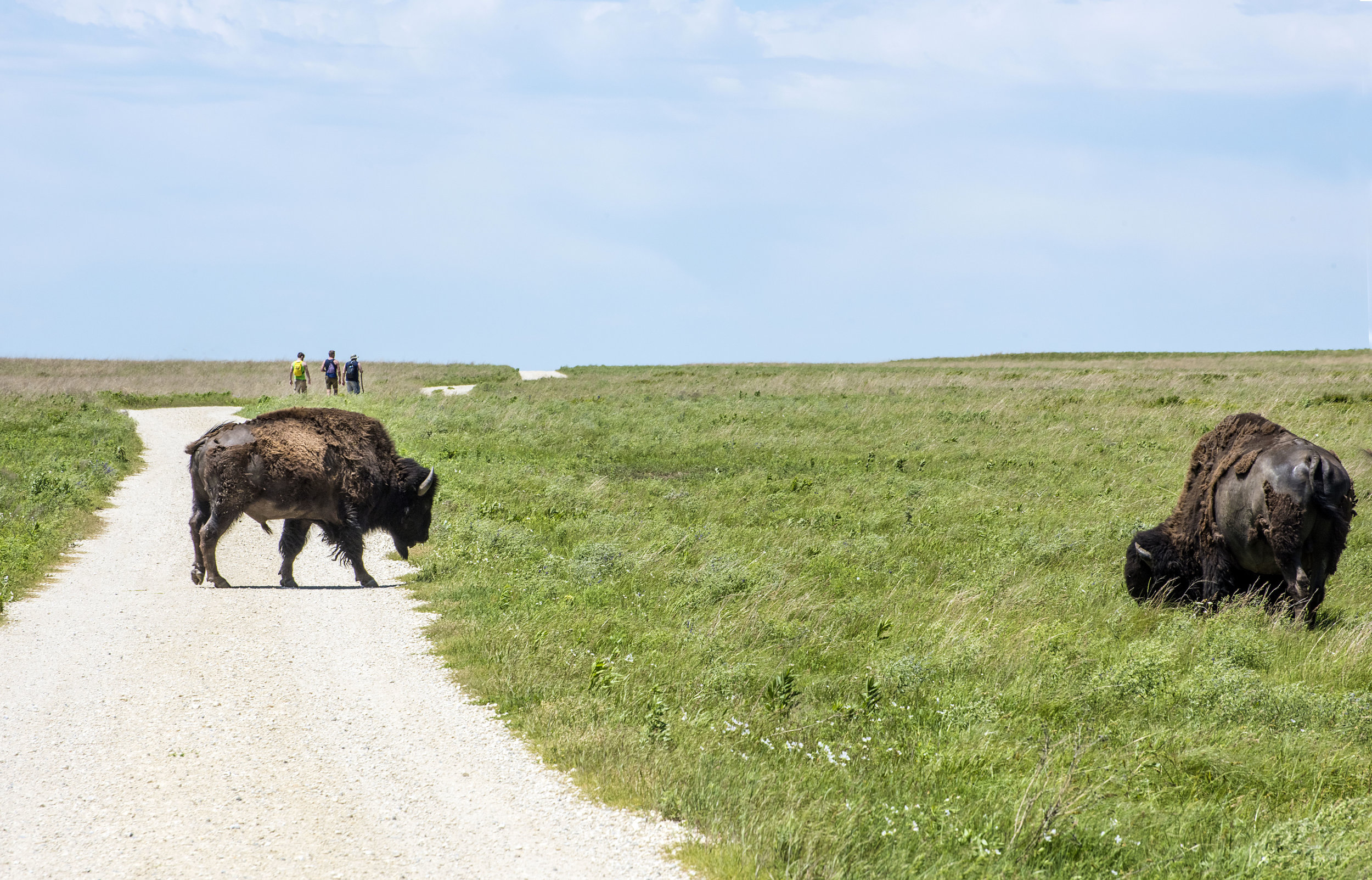
Later, we had to walk around the bison via the grass, which might have been harboring some of the 39 species of snakes that live in the Preserve.

There are 150 species of grassland area birds, such as this Dickcissel.
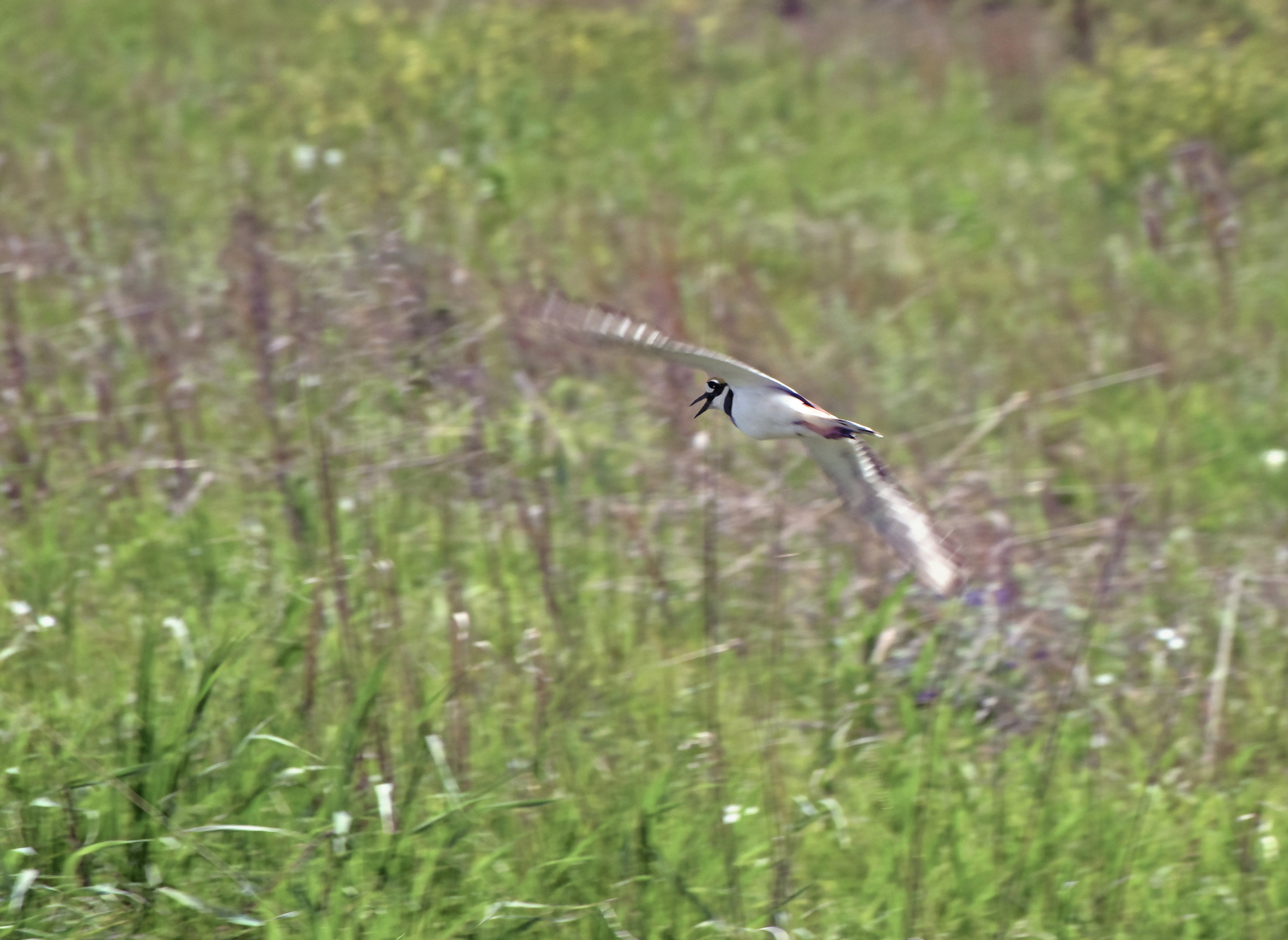
The Killdeer is so called because when excited its far carrying voice makes the sound "kill-deer."
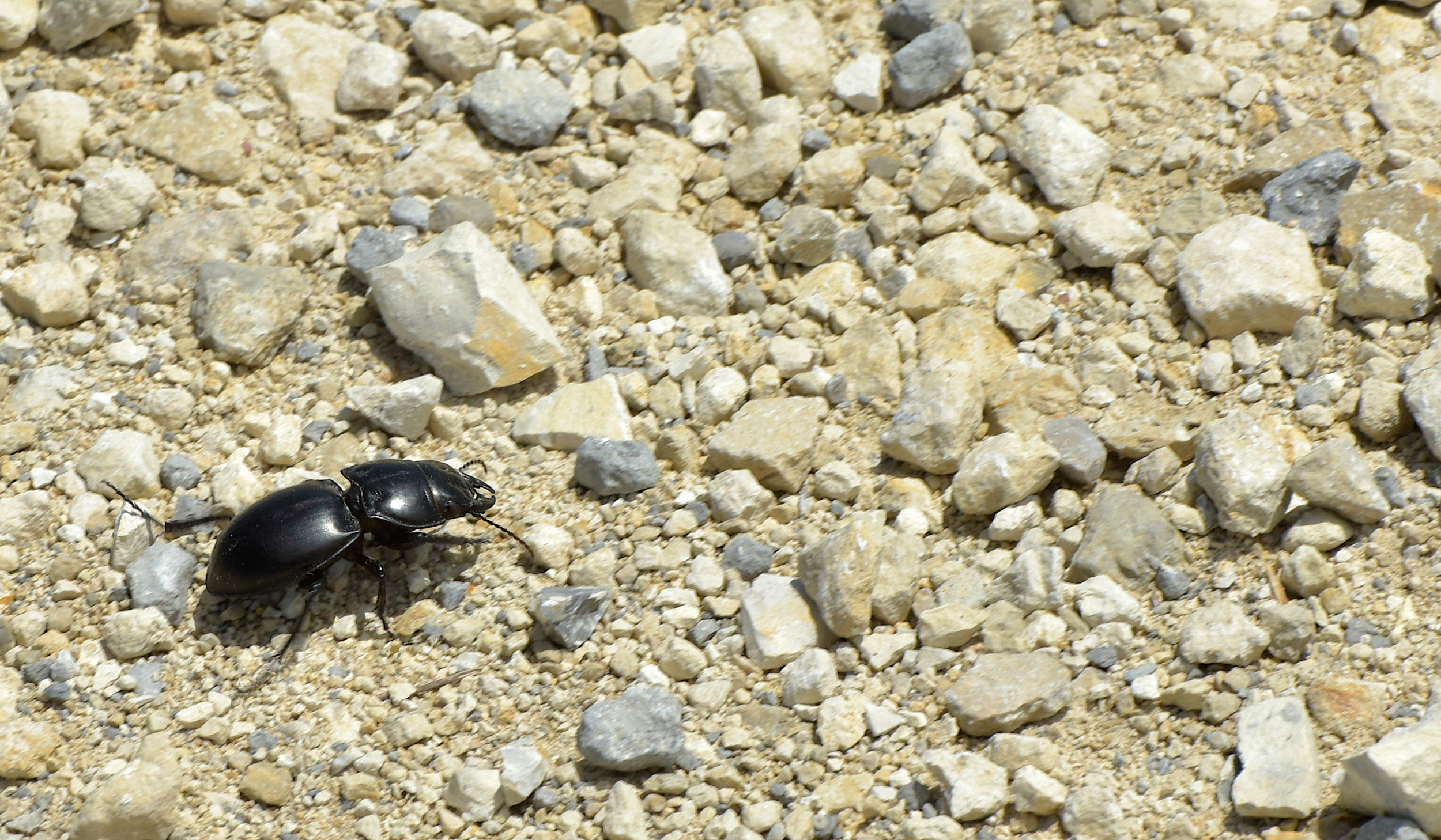
Dung beetles feed on bison manure, using it to provide housing and food for their offspring and for prairie and pasture nutrient recycling.
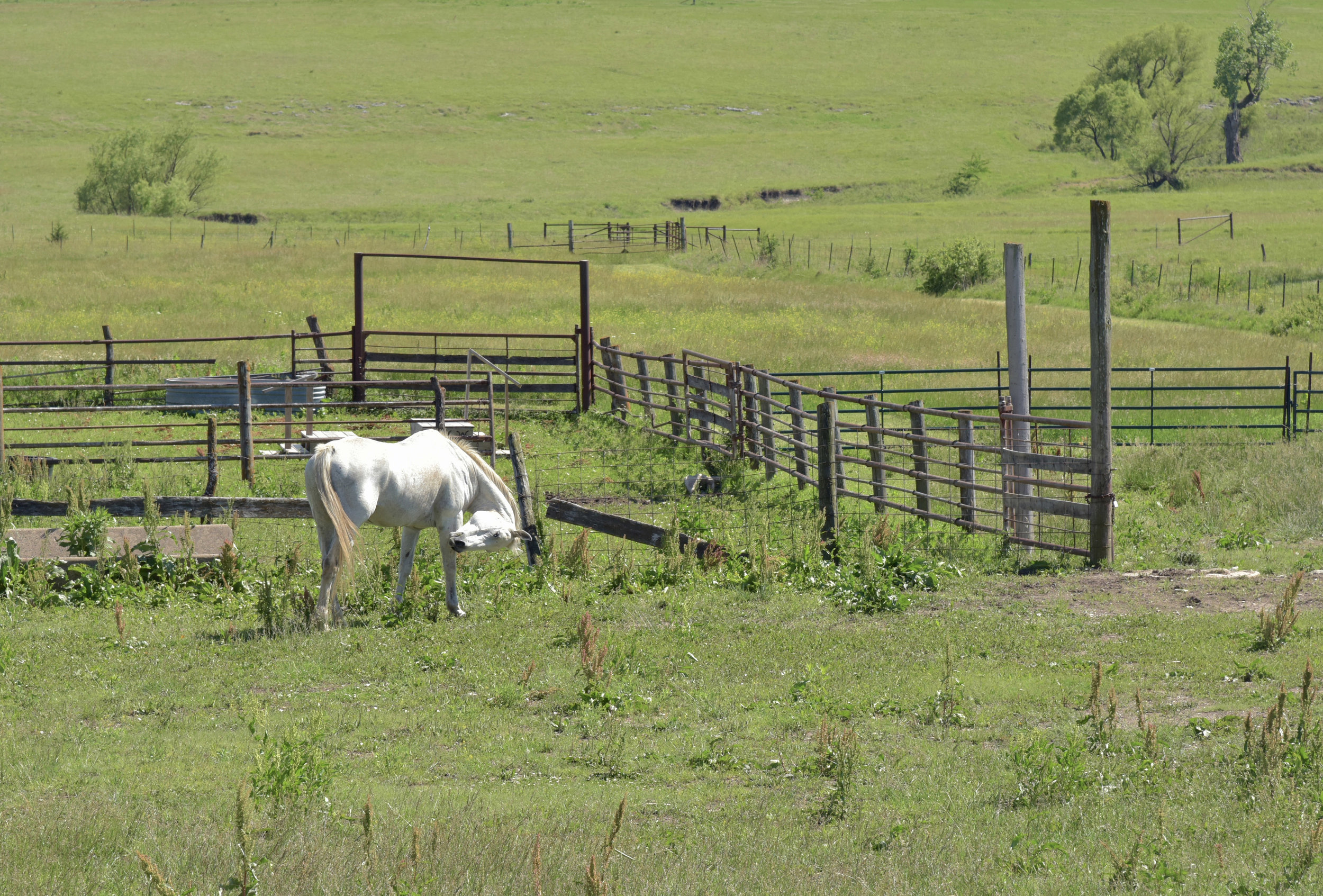
Spring Hill Farm and Stock Ranch was initially founded in 1878 by Stephen Jones, a successful cattleman from Colorado. He eventually amassed 7,000 acres, which is now part of the Preserve.
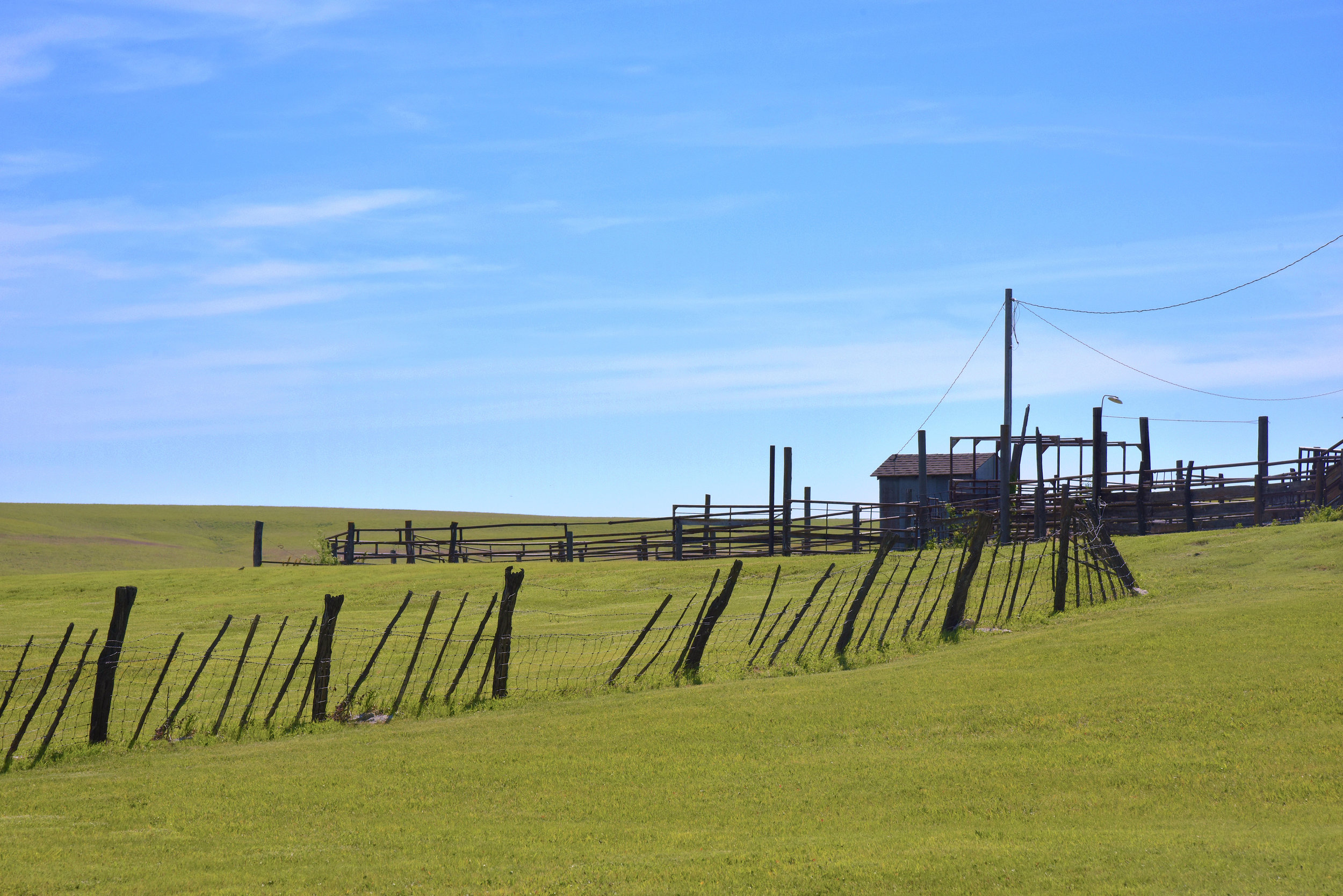
Jones and his wife Louisa started building a residence on the farm in 1878 and eventually enclosed the entire ranch with 30 miles of five-foot high stone fence to accommodate his cattle operations.
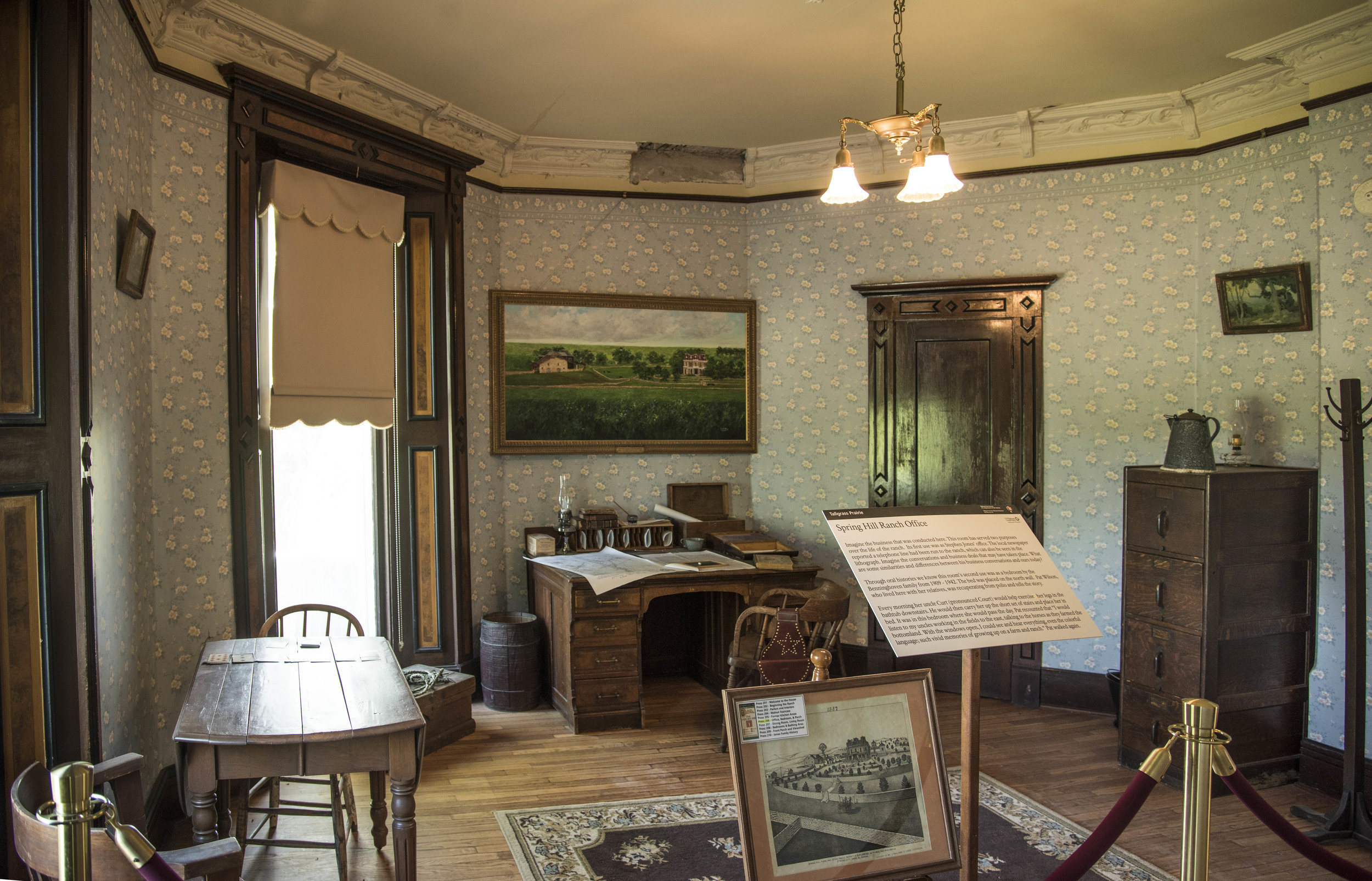
Spring Hill Farm and Stock Ranch office was located in the Jones' residence, which was completed in 1881 at a cost of $25,000.
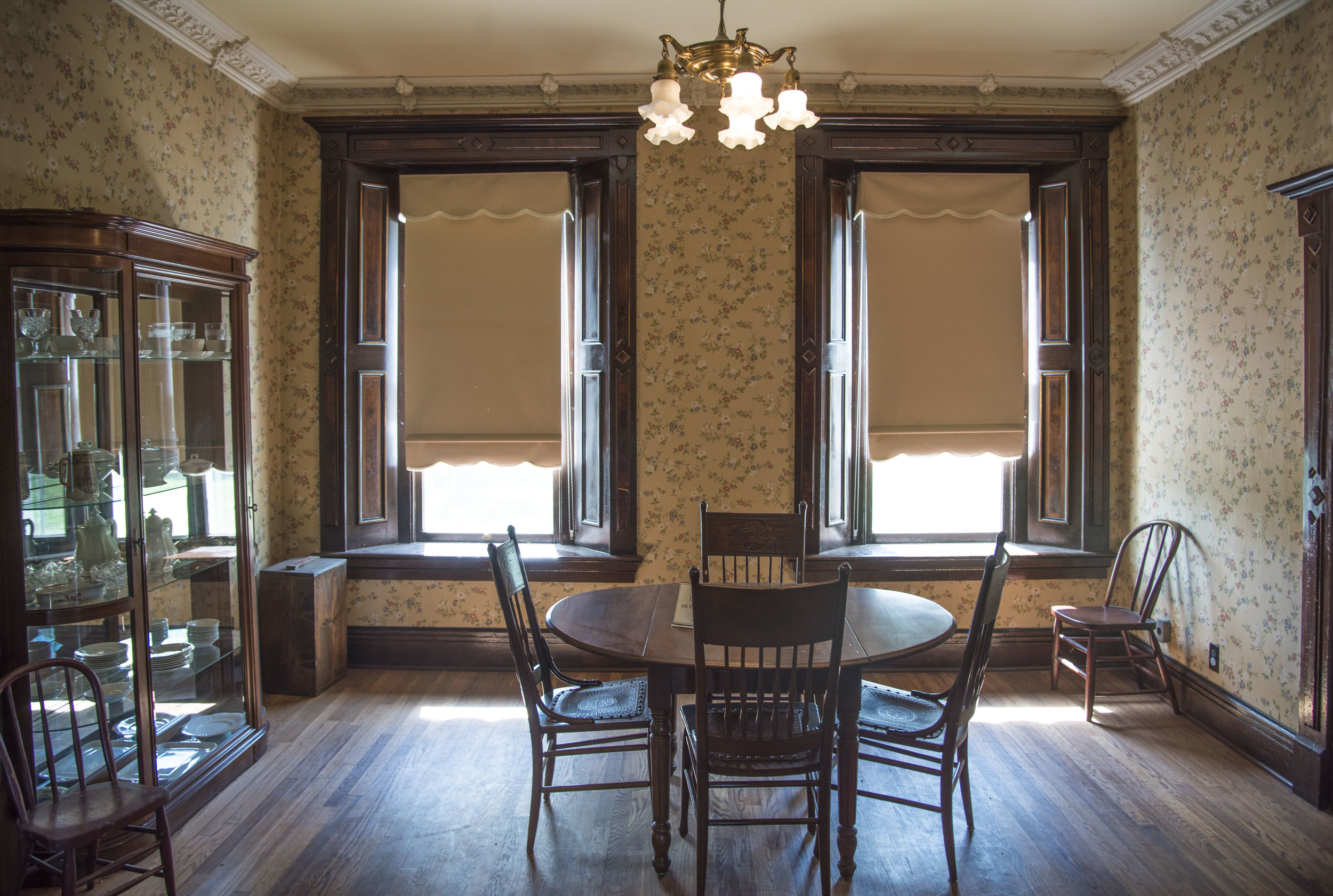
The Jones' dining room was located on the first floor of their residence.

Stephen and Louisa Jones, with their daughter Loutie, lived in the house until 1888 when Jones sold his grand estate and property to his neighbor and banking partner, Barney Lantry, for $95,000.

The three-story limestone ranch barn, measuring 110 x 60 feet, was built into hillside in 1882 to provide a well-insulated environment for the animal stables located on the lower floor.
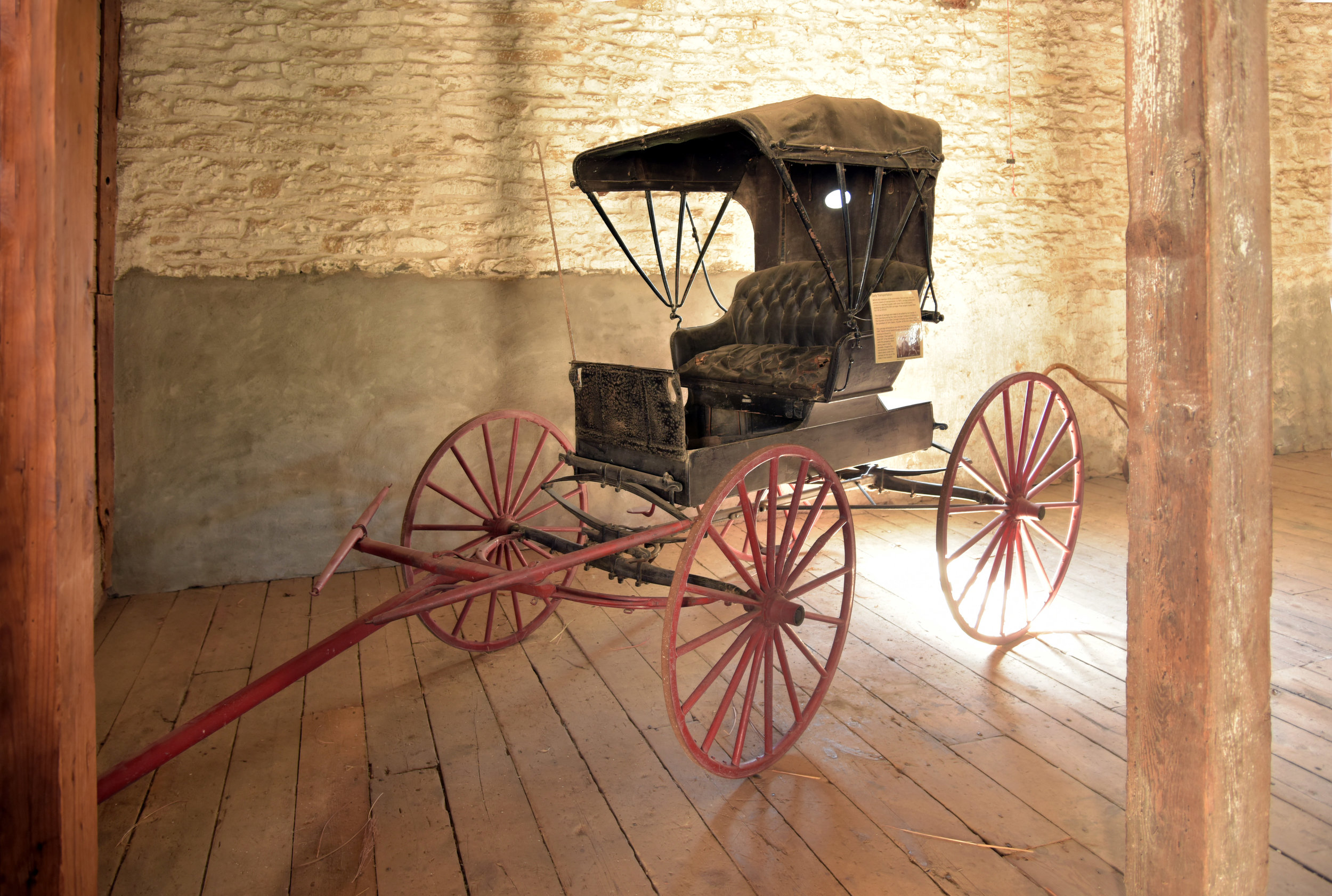
Two-Horse-Drawn Carriage, circa 1905, now kept in the barn with other equipment from the history of the farm and stock ranch.
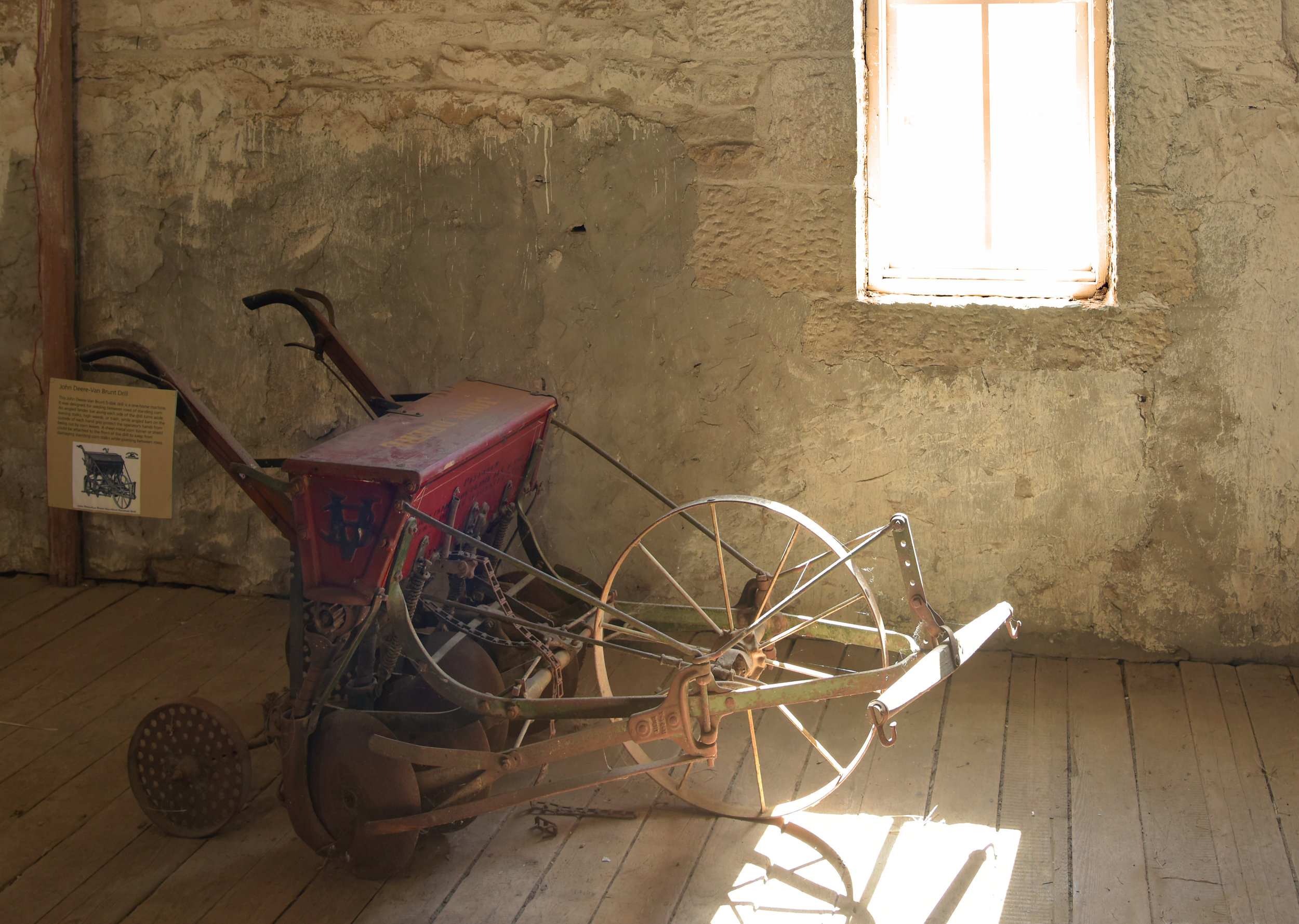
John Deere-Van Brunt 5-disk drill - a one-horse machine designed for seeding between rows of standing corn.
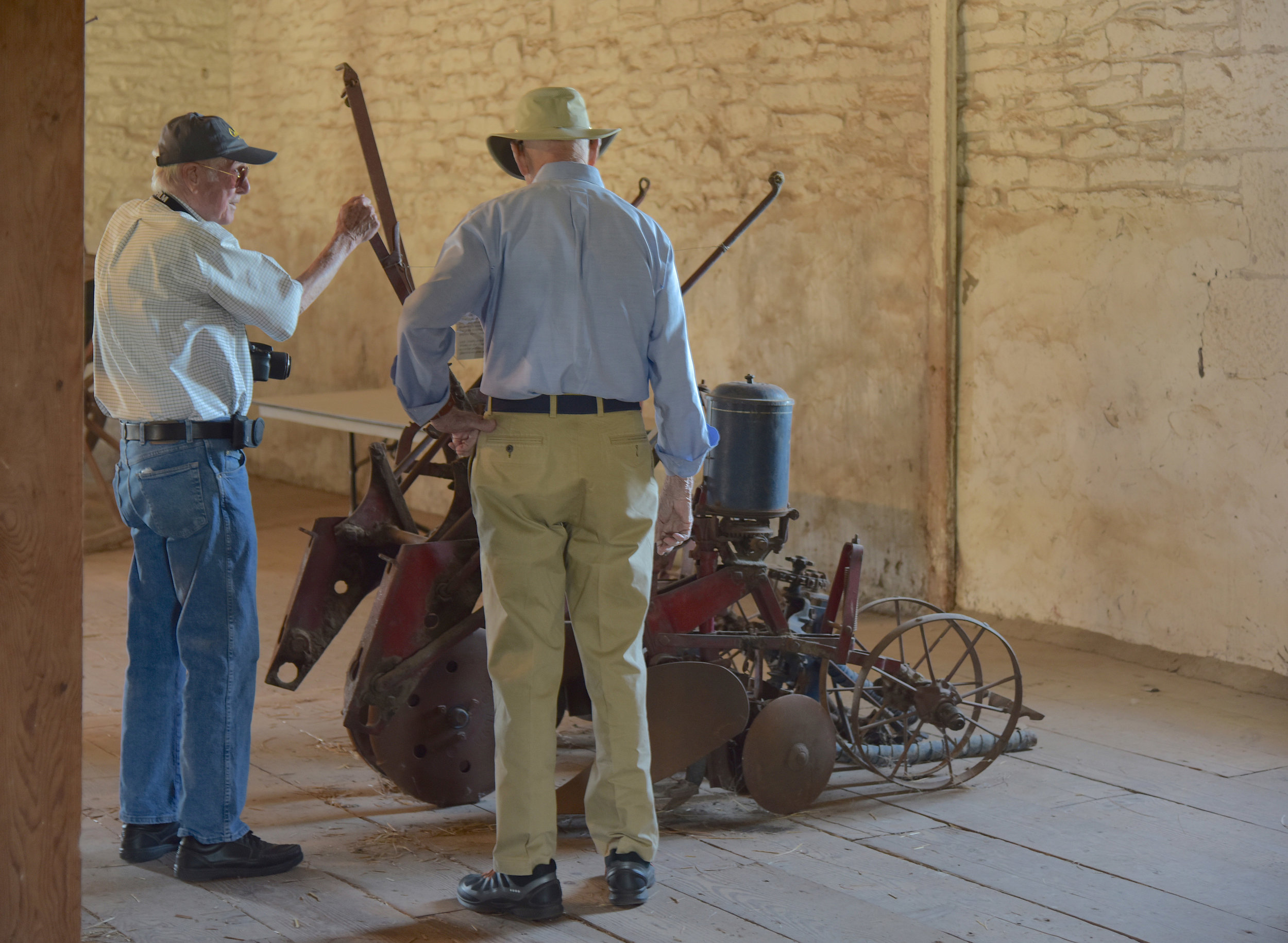
Two Kansas elders share stories about two-row lister planter that replaced one-man horse plow.
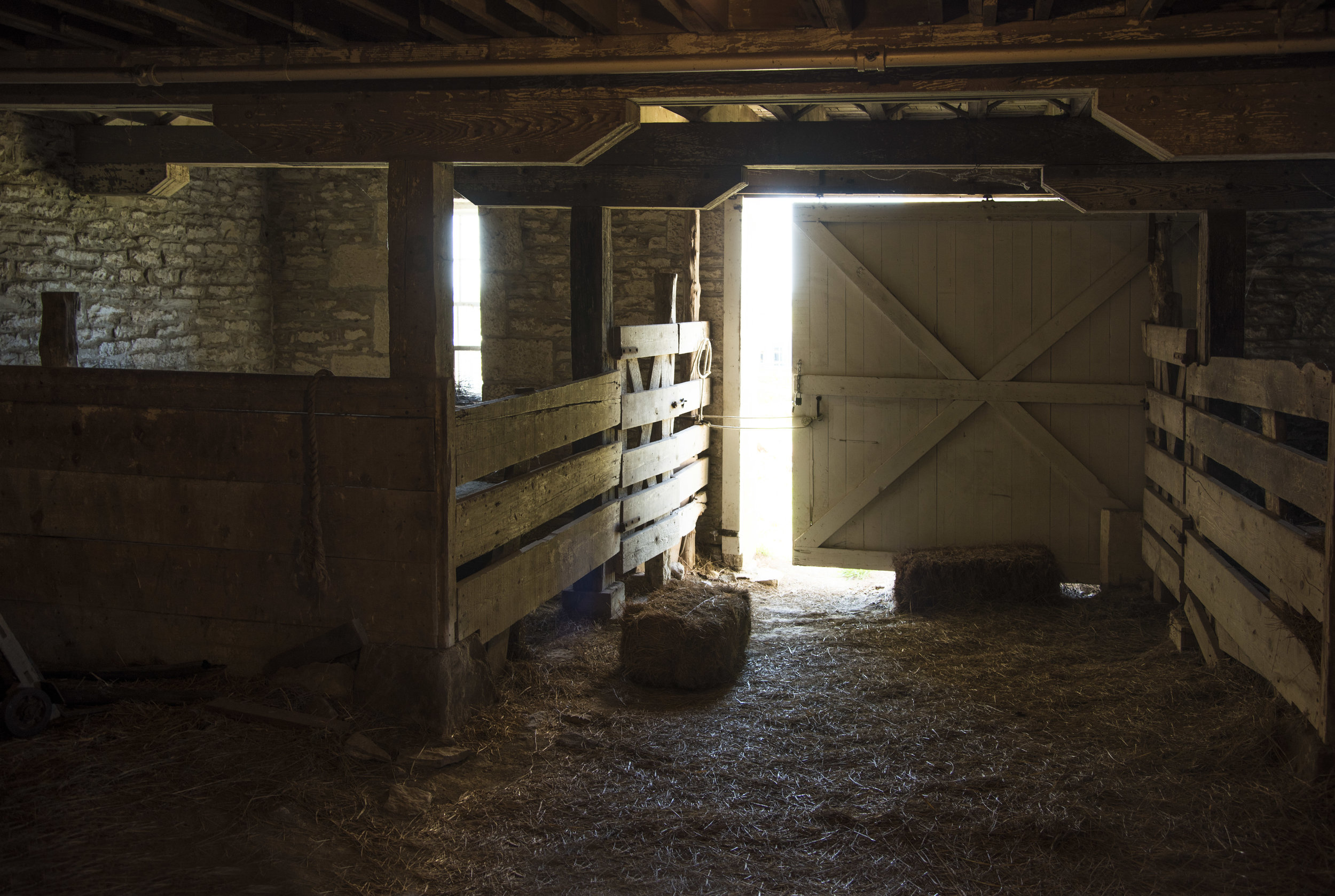
The lower floor was used to stable some of the livestock and for storage of saddles and harnesses in the tackroom. Jones had 30 horses, 4 mules, 8 milkcows, 200 swine, and 450 cattle in 1885.
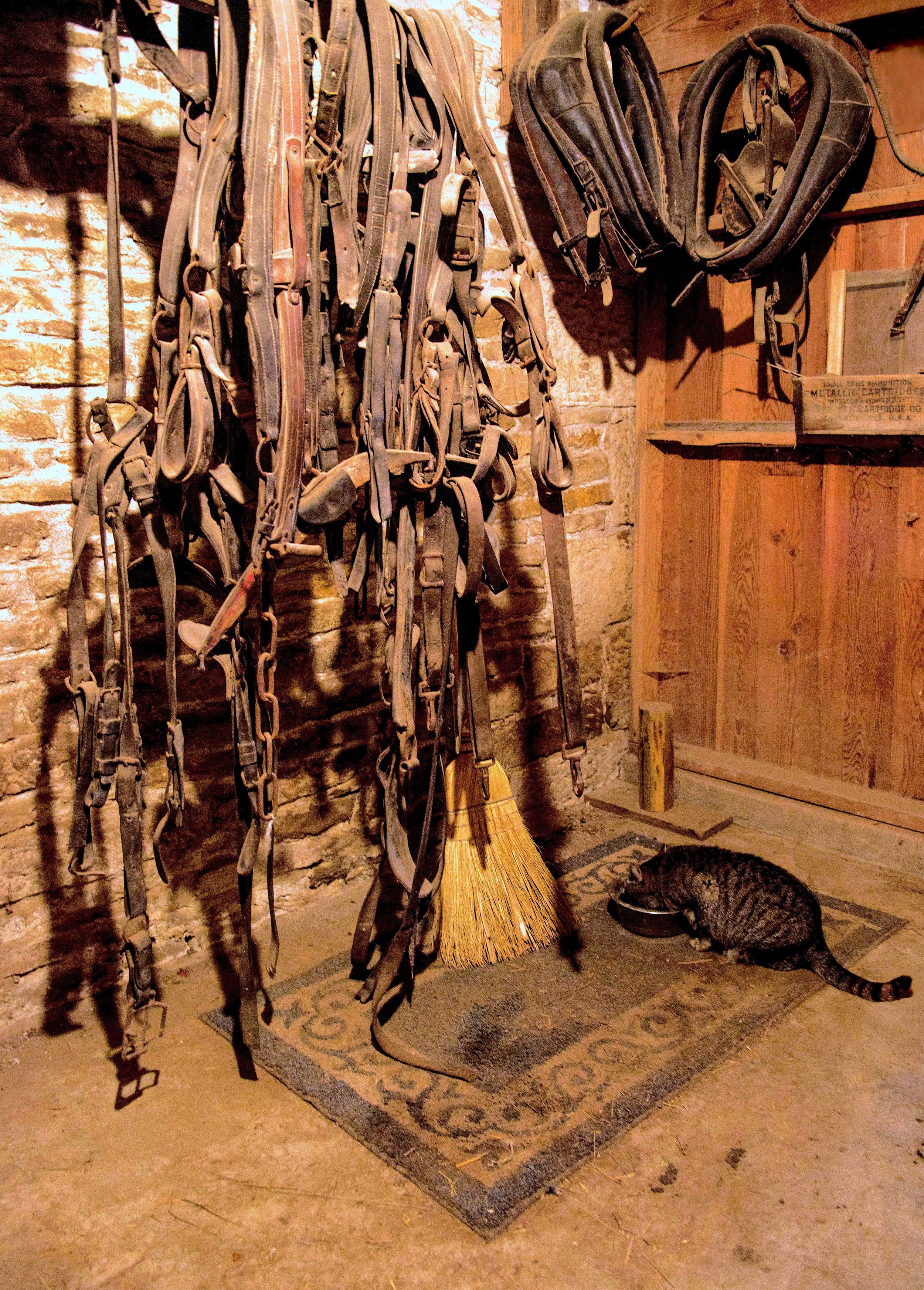
The tack room served the purpose of storage, whether it was saddles, harnesses, collars, or grain.
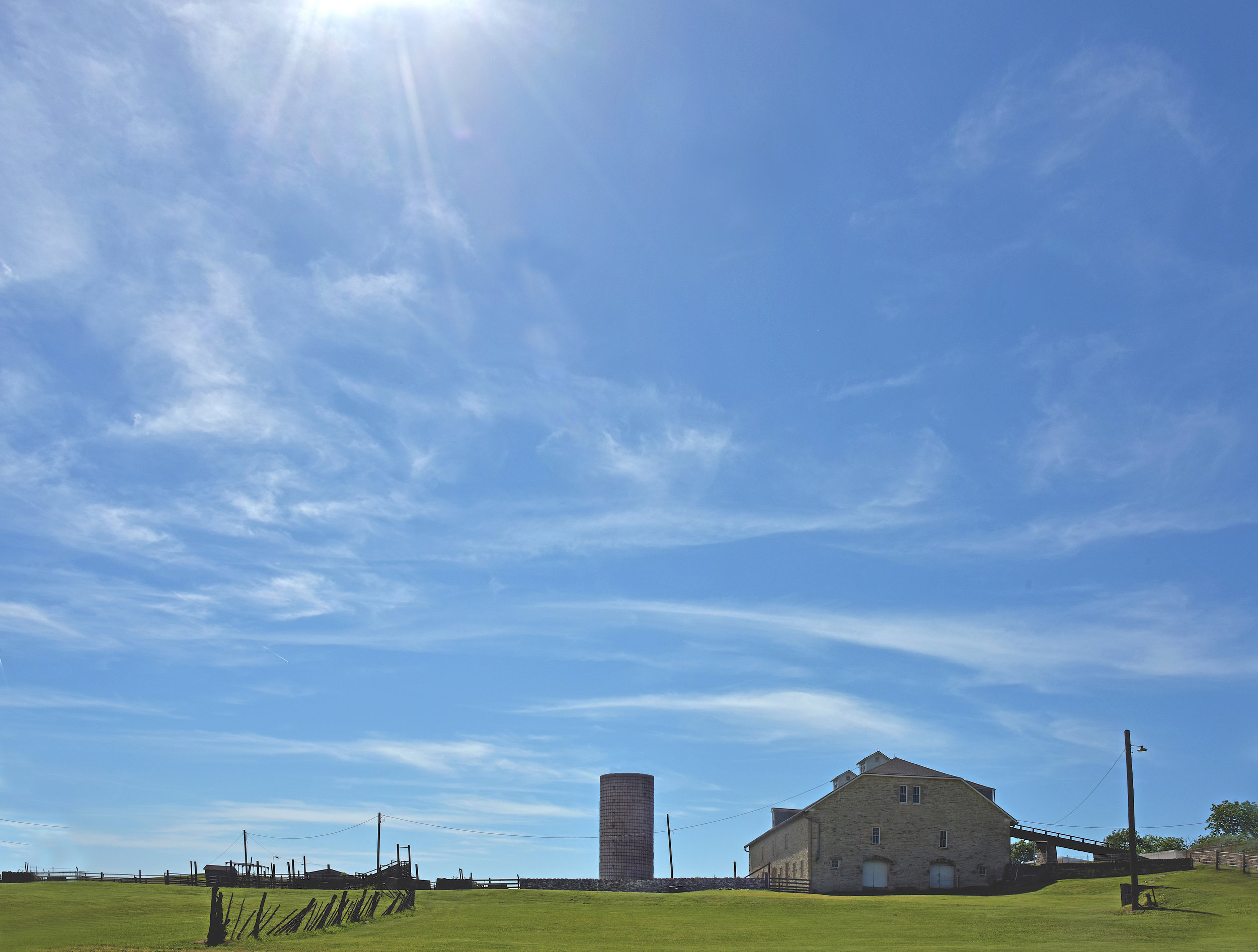
The ranch barn and stable cost $15,000 to build, with most of its limestone quarried from the property.
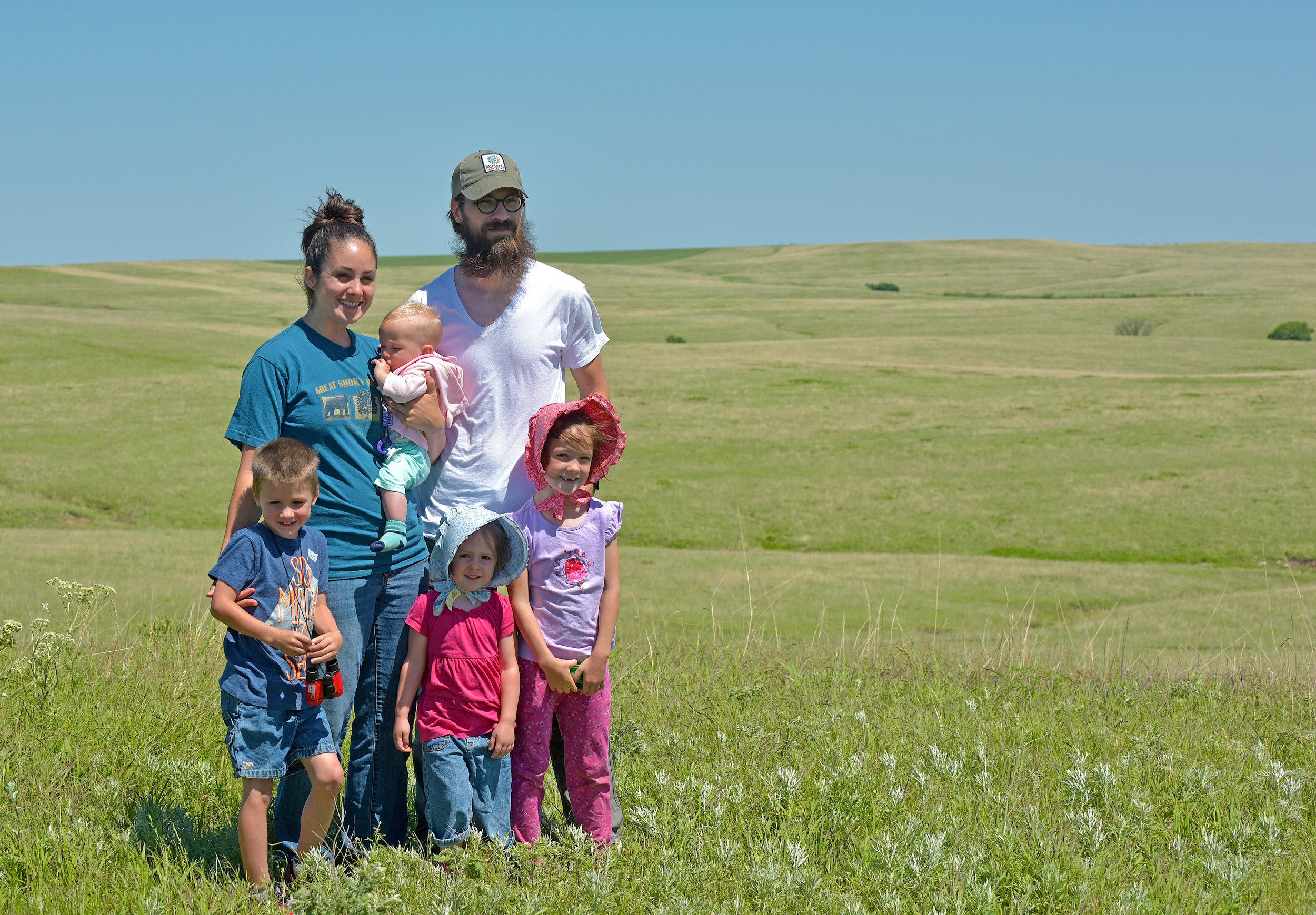
Family picture with kids wearing bonnets worn by travelers on the Sante Fe Trail, opened in 1821 for trading - Missouri through this area of Kansas to Mexico.
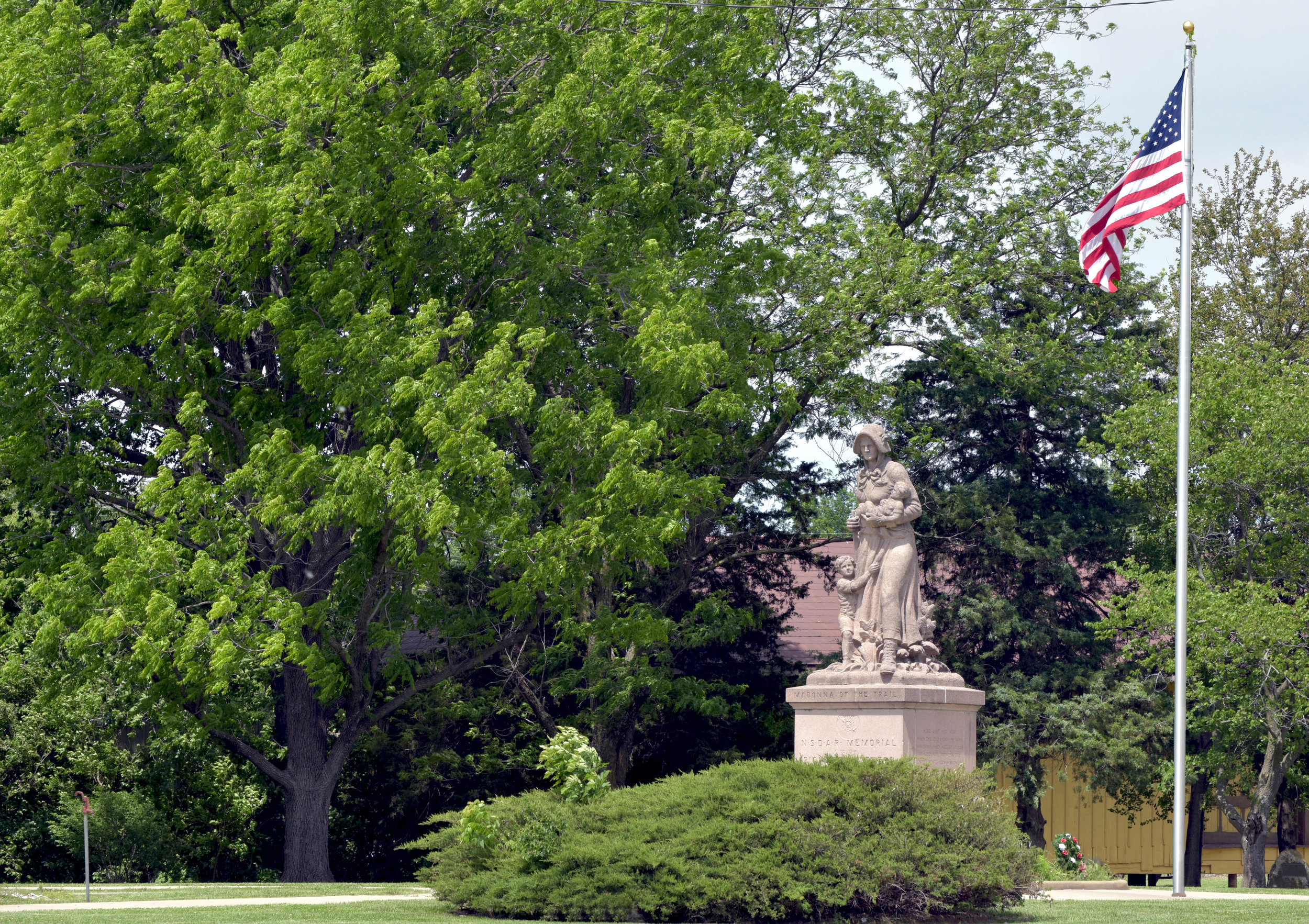
Madonna of the Trail (2005) is one of a 12 statue series dedicated to the spirit of the pioneer women in the US; located in Council Grove, KS, one of the last stops on the Santa Fe Trail.
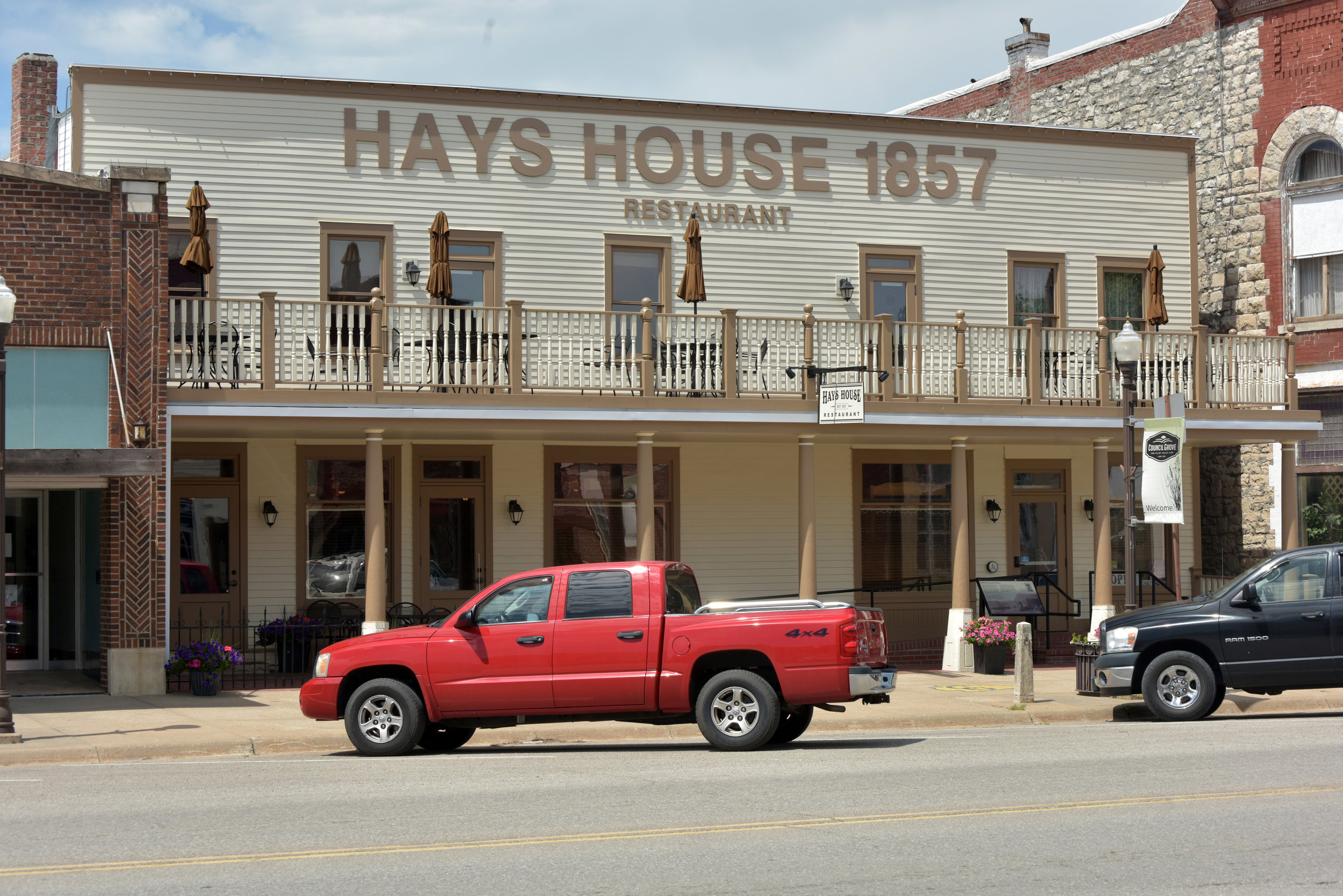
Hays House est. 1857 founded by Seth M. Hays on the Sante Fe trail; he was the first European-Am settler who came to the Council Grove area in 1847 to trade with the Kaw tribe.
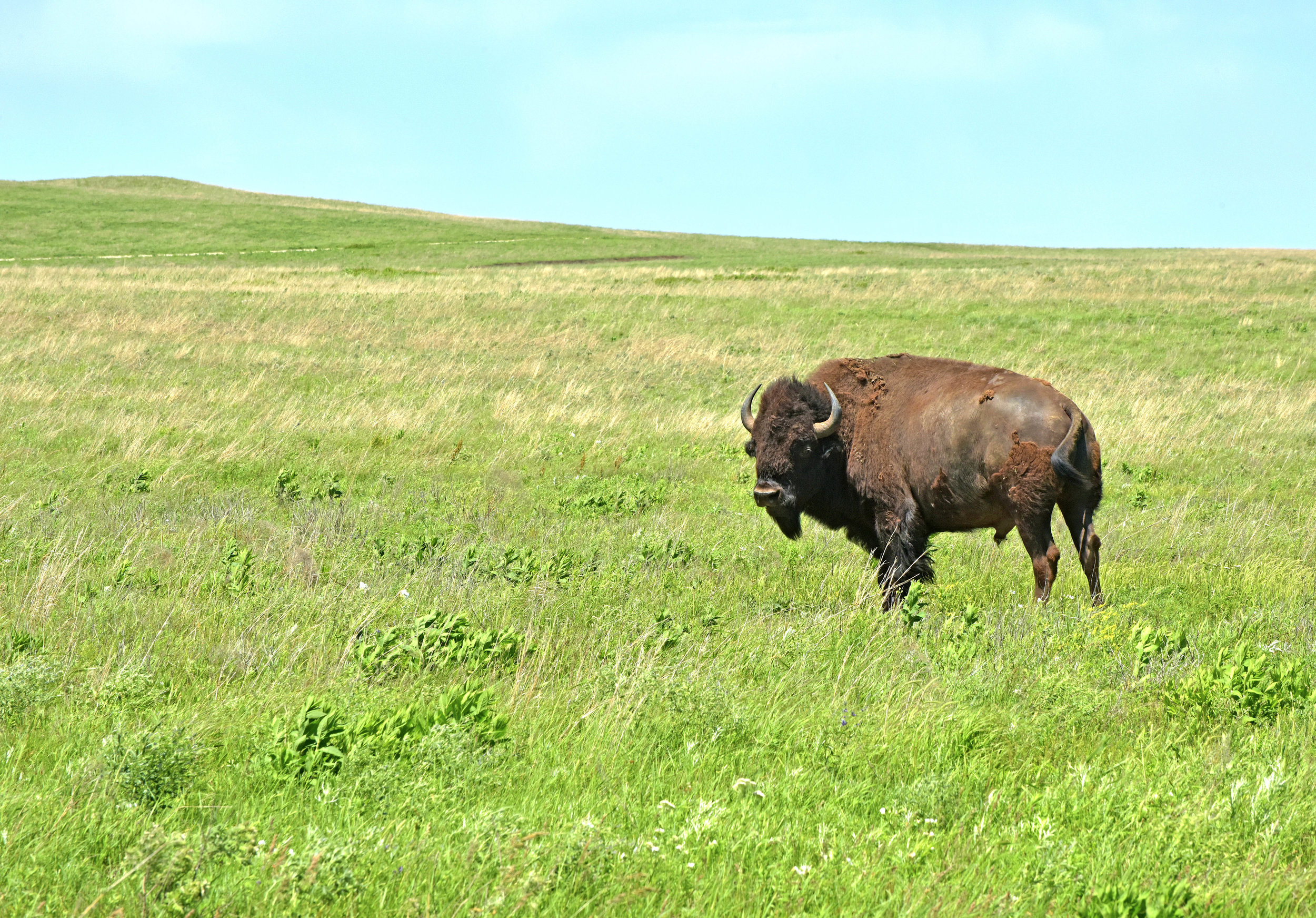
Due to the work of Nat'l Preserves, bison, once reduced to 1,000 at the lowest point, today have rebounded to about 350,000, only 1% of their original numbers, but no longer in danger of extinction.
PrevNext